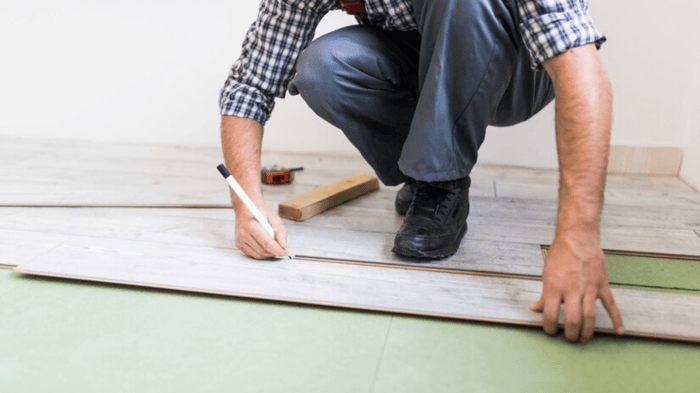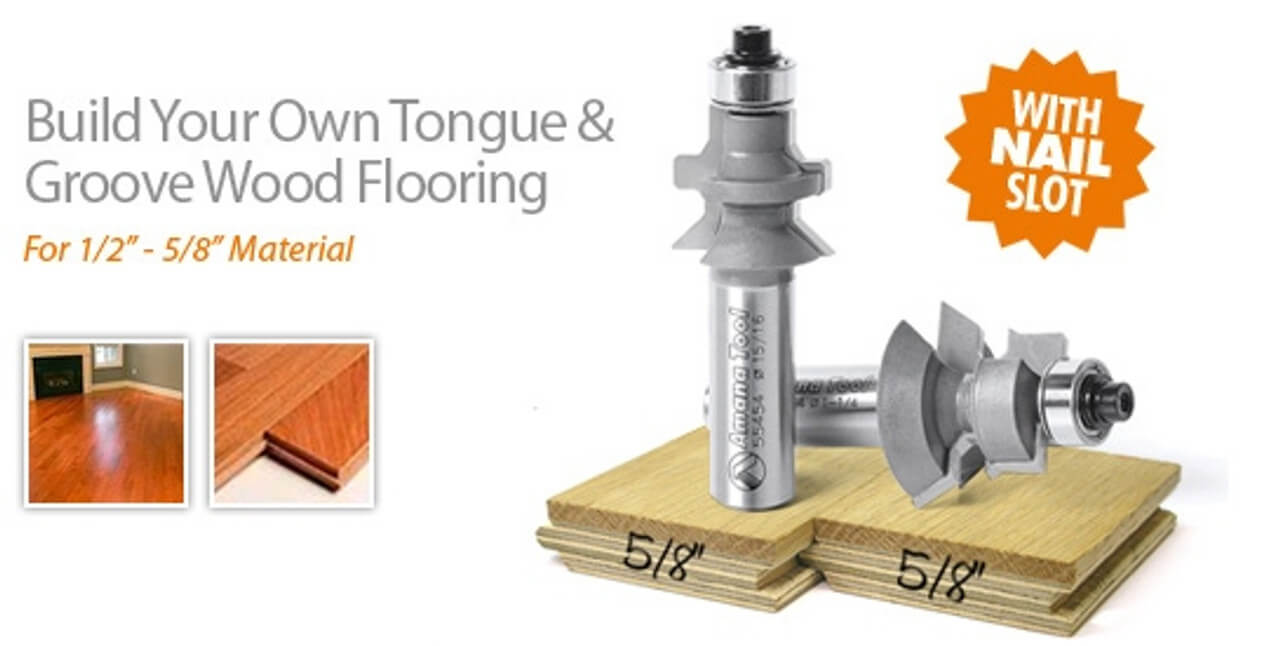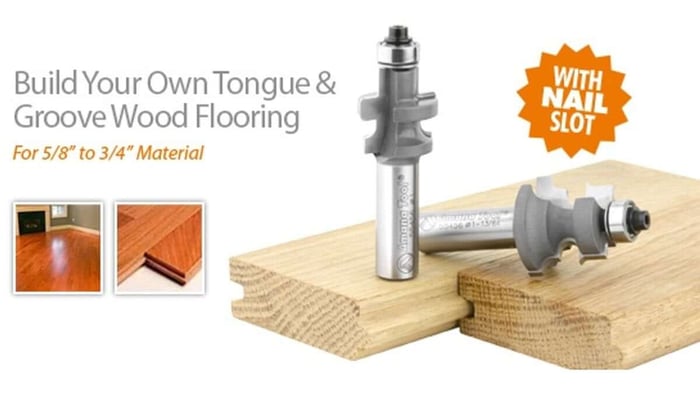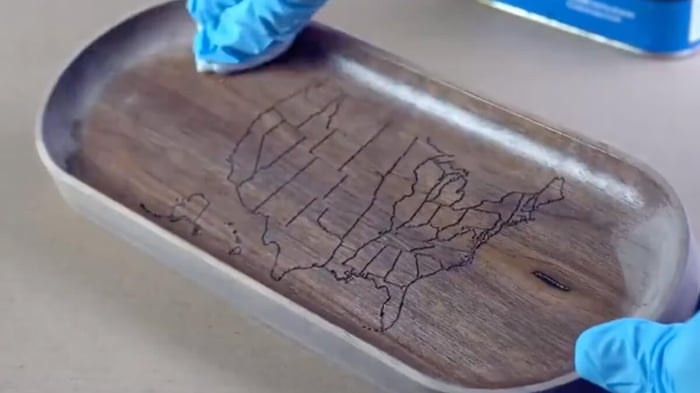
Getting the Perfect Cut with Flooring Router Bits
Looking to achieve the perfect cut for your flooring project? Explore the various types of flooring router bits, the materials they can cut, choosing the right one for your project, tips for effective use, and safety precautions to keep in mind.
Flooring router bits are essential for clean and precise cuts on materials like hardwood, laminate, vinyl, tile, and carpet.
Dive in and achieve the perfect cut with flooring router bits!
What Are Flooring Router Bits?
Flooring router bits are specialized cutting tools used in woodworking for achieving precision cutting and perfect edges, particularly in flooring installation projects. These router bits are essential tools for carpentry enthusiasts and professionals alike.
They are designed with sharp, durable blades that allow for clean and accurate cuts on various types of wood, ensuring a professional finish. The precise cuts made by flooring router bits not only enhance the aesthetics of the final product but also contribute to seamless installation processes. Their versatility in creating intricate designs and patterns on hardwood, laminate, or engineered flooring makes them indispensable for achieving high-quality results in woodworking projects.
What Are the Different Types of Flooring Router Bits?
Flooring router bits come in various types tailored for specific woodworking needs. Understanding the differences in router bits, such as straight, flush trim, rabbeting, cove, and roundover bits, is crucial for efficient and precise cutting in flooring projects.
-
Straight router bits are perfect for creating dadoes or grooves in the wood, providing clean and sharp edges.
-
Flush trim bits, on the other hand, are ideal for trimming laminate and veneers flush with the surface.
-
Rabbeting bits are great for creating rebates or step-shaped edges, adding depth and dimension to the flooring design.
-
Cove bits give a concave profile, enhancing the aesthetic appeal of rounded edges, while roundover bits are excellent for adding smooth, curved edges to the flooring material, giving it a polished and professional finish

Flooring Router Bits Cut?
Flooring router bits are designed to cut various materials commonly used in woodworking projects. These bits can efficiently cut hardwood, laminate, vinyl, tile, and even carpet materials.
Hardwood is a popular choice for flooring projects due to its durability and aesthetic appeal, and flooring router bits can handle this material with precision.
Laminate, known for its affordability and easy maintenance, is another material that these bits can work on effectively.
Vinyl, often used in high-moisture areas like bathrooms and kitchens, is also compatible with flooring router bits.
Even tile and carpet materials can be shaped and cut accurately using these versatile router bits, making them essential tools for a wide range of woodworking projects.
How to Choose the Right Flooring Router Bit for Your Project?
Selecting the appropriate flooring router bit is crucial for the success of your woodworking project. Consider factors such as the material, type of cut needed, and shank size when choosing the right router bit for your specific cutting requirements.
The material compatibility plays a significant role in determining the effectiveness of the router bit. Ensure that the bit you select is suitable for the type of wood or material you are working with to achieve clean and precise cuts.
The cut type is crucial as it determines the finish and details of your woodworking project. Whether you need straight cuts, chamfer edges, or intricate designs, selecting the appropriate cut type will enhance the quality of your work.
Pay attention to the shank size to ensure compatibility with your router, as using the correct shank size is essential for safe and efficient routing operations.
Consider the Material
When choosing a router bit, always consider the material you will be working with to ensure compatibility and achieve desired edge profiles. This step is essential for safety and precision in your woodworking projects.
Different materials require specific router bits to achieve the desired results, such as sharp, clean cuts or intricate profiles. Choosing the right router bit for the material is crucial to prevent tear-out or splintering, ensuring a smooth finish.
It's also important to follow safety guidelines when operating the router, such as wearing protective gear and using proper techniques to reduce the risk of accidents. By paying attention to material compatibility and safety precautions, you can create professional-looking edges and enhance the overall quality of your woodworking projects.
Determine the Type of Cut Needed
Understanding the type of cut required for your project, whether it's a specific depth, mortising, or other techniques, is essential in choosing the right router bit. Proper handling of the router bit is crucial for accurate cuts.
Different projects call for different cutting depths, requiring precision in selecting the appropriate router bit. For tasks like mortising, specialized bits are designed to create clean and precise cuts. When handling the router bit, ensuring a secure grip and steady movement is key to maintaining control and achieving the desired outcome. By recognizing the cutting depth requirements and practicing safe handling techniques, woodworkers can enhance the quality and safety of their woodworking projects.
Check the Shank Size
Checking the shank size of your flooring router bit is vital for compatibility with your router and ensuring safe operation. The right shank size contributes to the tool's ergonomic design and performance.
A router bit with an appropriate shank size ensures a secure fit in the router collet, preventing any wobbling or slippage that could lead to dangerous accidents during operation. By selecting the correct shank size, you enhance the overall stability and balance of the router, promoting smoother and more precise cuts. This attention to detail not only safeguards your safety but also maximizes the efficiency and effectiveness of your woodworking projects, ultimately yielding professional-quality results.

What Are Some Tips for Using Flooring Router Bits?
To maximize the efficiency and precision of flooring router bits, it's essential to follow certain tips and techniques. Using a router table for stability, making multiple passes for clean cuts, and employing guides for straight cuts are some helpful strategies for successful woodworking projects.
- When using a router table with flooring router bits, ensure that the bit height is set correctly to match the thickness of the material you are working with, as this will help in achieving uniform cuts.
- When making multiple pass cuts, it's crucial to adjust the cutting depth gradually, especially with dense materials, to avoid overloading the bit. Using guides such as fences and edge guides can assist in keeping the cuts straight and consistent, resulting in a professional finish on your flooring projects.
Use a Router Table for More Stability
Utilizing a router table while working with bits provides added stability and control to your cutting operations. This technique is particularly beneficial when performing tasks such as panel raising and ensuring surface protection.
The router table serves as a solid foundation for intricate woodworking projects, allowing for precise and smooth cuts. By securely holding the material in place, it minimizes vibrations and potential slips, resulting in cleaner and more accurate panel raising. The surface of the router table acts as a barrier between the router bit and the workpiece, reducing the risk of damage and improving overall safety during the routing process. These advantages make the router table an indispensable tool for efficient and professional woodworking.
Make Multiple Passes for a Clean Cut
Making multiple passes with flooring router bits is a recommended practice for achieving a clean and precise cut in woodworking projects. This method is especially useful for creating bullnose profiles and ensuring quality wood finishing.
By taking multiple passes with the router bit, you can gradually remove material with each pass, which not only helps in precision but also minimizes the risk of splintering or tear-out. The key is to adjust the cutting depth incrementally, allowing the bit to work more efficiently without straining the wood fibers.
This approach is crucial for achieving smooth edges and curves, particularly when aiming for intricate designs or details in your woodworking projects. Making multiple passes can enhance the overall finish of the wood surface, resulting in a professional-looking end product.
Use a Guide or Fence for Straight Cuts
When using flooring router bits for straight cuts, employing a guide or fence is essential in ensuring cutting efficiency and maintaining accurate measurements. This practice is crucial for achieving professional results and simplifying floor maintenance.
A guide or fence helps to stabilize the router bit, preventing it from wandering off course and producing clean, straight cuts. By having a guide in place, you reduce the risk of mistakes that can result in wasted material or uneven edges. The precise measurements facilitated by the guide also contribute to a seamless installation process, saving time and effort. Using a guide or fence simplifies tasks such as edge finishing and trim work, making overall floor maintenance more manageable.
What Are the Safety Precautions When Using Flooring Router Bits?
Prioritizing safety when working with flooring router bits is crucial to prevent accidents and ensure a secure woodworking environment. By following essential safety precautions such as wearing protective gear, keeping hands away from the bit, and maintaining dust control, users can minimize risks and promote safe woodworking practices.
- Protective gear, including safety glasses, ear protection, and a dust mask, should always be worn to shield the eyes, ears, and respiratory system from potential harm.
- It is important to secure loose clothing and tie back long hair to prevent any entanglement with the router bit. Always ensure that the router is securely mounted and stable before operation to avoid any unexpected movements.
- Implementing proper dust control measures, such as using a dust collection system or vacuum attachment, can help reduce airborne particles and improve air quality in the workspace.
Frequently Asked Questions
What are flooring router bits?
Flooring router bits are specialized cutting tools used to create precise cuts in flooring materials such as hardwood, laminate, or vinyl. These bits are designed to fit into a router and are used to shape or trim the edges of flooring to achieve the desired size and shape.
How do I choose the right flooring router bit for my project?
When choosing a flooring router bit, consider the type of flooring material you are working with, the size and shape of the cuts you need to make, and the type of router you will be using. It is also important to choose a bit with a quality cutting edge and the appropriate shank size for your router.
Can flooring router bits be used for other types of cuts?
Yes, flooring router bits can be used for a variety of other cuts besides flooring edges. These bits are versatile and can be used for trimming, shaping, and cutting other materials such as wood, plastic, and even metal.
How do I ensure a perfect cut with flooring router bits?
To achieve a perfect cut with flooring router bits, it is important to carefully plan and measure your cuts, use a sharp and high-quality bit, and make multiple passes if needed. It is also crucial to securely clamp down your material and use proper safety precautions while operating the router.
What maintenance is required for flooring router bits?
To maintain the effectiveness and longevity of your flooring router bits, it is important to clean them after each use and periodically sharpen or replace them as needed. Be sure to follow the manufacturer's instructions and store the bits in a dry and safe place.
Can I use flooring router bits without prior experience?
While some experience with using a router is recommended, anyone can learn to use flooring router bits with proper instruction and safety precautions. It is important to carefully read the instructions and practice on scrap material before working on your actual flooring project.





